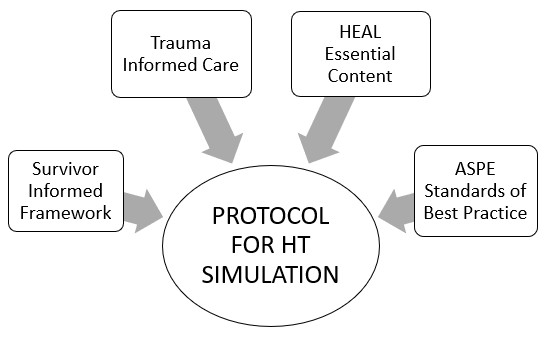Simulation Based Education Subcommittee
The HEAL Subcommittee on Simulation Education promotes the inclusion of simulation as a tool for teaching healthcare practitioners to identify, treat, and refer victims of human trafficking. The subcommittee recommends aligning all simulation activities with best practices as defined by professional societies like the Association for Standardized Patient Educators (ASPE).1
Standardized/simulated patient (SP)-based simulation allows learners to practice in a safe and supported environment with structured feedback on performance. SPs are carefully trained individuals who may portray patients, caregivers, health care professionals or other individuals in a simulation scenario.
The Subcommittee on Simulation Education is designing a protocol for the development of SP cases portraying victims/survivors of HT. The protocol merges a survivor-informed framework, principles of trauma-informed care, HEAL Education Committee’s Introductory Training on Human Trafficking for U.S. Health Care Professionals: Essential Content2, and ASPE’s Standards of Best Practice.

1. Lewis KL, Bohnert CA, Gammon WL, Hölzer H, Lyman L, Smith C, Thompson TM, Wallace A, Gliva-McConvey G. The association of standardized patient educators (ASPE) standards of best practice (SOBP). Advances in Simulation. 2017 Dec; 2(1):10.
2. https://healtrafficking.org/publications/essential-components-for-a-health-professional-trafficking-training/
3. Stoklosa H, Lyman M, Bohnert C, Mittel O. Medical education and human trafficking: using simulation. Med Educ Online. 2017; 22(1):1412746.
